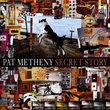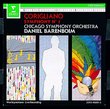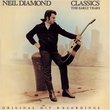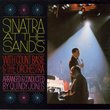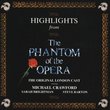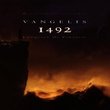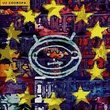| All Artists: Alexander Scriabin, Vladimir Horowitz Title: Horowitz Plays Scriabin Members Wishing: 0 Total Copies: 1 Label: RCA Release Date: 8/10/1989 Genre: Classical Styles: Forms & Genres, Sonatas, Historical Periods, Modern, 20th, & 21st Century, Instruments, Keyboard Number of Discs: 1 SwapaCD Credits: 1 UPC: 078635621525 |
Search - Alexander Scriabin, Vladimir Horowitz :: Horowitz Plays Scriabin
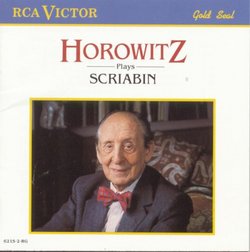 | Alexander Scriabin, Vladimir Horowitz Horowitz Plays Scriabin Genre: Classical
![header=[] body=[This CD is available to be requested as disc only.]](/images/attributes/disc.png?v=430e6b0a) ![header=[] body=[This CD is available to be requested with the disc and back insert.]](/images/attributes/disc_back.png?v=430e6b0a) ![header=[] body=[This CD is available to be requested with the disc and front insert.]](/images/attributes/disc_front.png?v=430e6b0a) ![header=[] body=[This CD is available to be requested with the disc, front and back inserts.]](/images/attributes/disc_front_back.png?v=430e6b0a) |
Larger Image |
CD DetailsSimilarly Requested CDs
|
CD ReviewsFrom Byronic to Orgiastic Hank Drake | Cleveland, OH United States | 11/06/2005 (5 out of 5 stars) "Vladimir Horowitz was a champion of Scriabin's music long before it became fashionable, or even semi-fashionable. Scriabin's music appeared on Horowitz's programs as early as the 1920s. Horowitz's first issued Scriabin recordings were made at his 25th Anniversary Concert in 1953 (also his last public recital until his famous comeback in 1965). The B-flat minor, and C-sharp minor Etudes are given more turbulent performances than usual. There is a great deal brewing beneath the surface. At times, it seems like Horowitz is trying to burst past his own flesh. The desperate passion of his performance lends credence to the notion that he was approaching a nervous breakdown. The sixteen Preludes were recorded in 1956. (Actually, eighteen Preludes were recorded at these sessions, but two were placed on another album.) Horowitz chose to program the Preludes in a canny sequence of contrasts and surprises building to a climax, rather than sequentially. The Preludes start in the Chopinesque mode, becoming Wagnerian and epic, before dissolving into atonality - - revealing the scope of Scriabin's development. The Sonata No. 3, also from 1956, is given a broadly phrased, brooding, Byronic performance. The relaxed pacing of the first movement allows Horowitz to move through the various "soul states" without splintering the structure. Contrast the way Horowitz plays the second movement, using the pedal to skillfully blend harmonies, to the way Askhenazy unimaginatively plunks the piece out. (In this movement, Horowitz makes a small cut in the score which actually improves structural clarity.) The transition between the third movement (truly an example of a musical "calm before the storm") is handled with exceptional skill, and Horowitz makes the last movement exciting without over stressing compositional points. Througout the Preludes and Sonata, the balance and poise of the playing speak volumes about Horowitz's post-1953 recovery. Horowitz played Scriabin's Fifth Sonata during the 1975-1976 season. In his 70s, the pianist sacrifices nothing to age in the most orgiastic performance of this sensual piece ever committed to disc. Scriabin was synesthetic (meaning that he could hear colors) and the musical colors in this piece border on the lurid. This is easily one of the finest recordings from the pianist's late period. The popular Etude in D-sharp minor, Op. 8, No. 12, played as an encore at Horowitz's 1982 London concert, is given a performance which seduces before building to an explosive climax. The sound varies, from a bit confined in the 1956 recordings (made in Horowitz's living room) to spacious in the stereo items. " Horowitz and Scriabin. . . . Keenan A. Reesor | Los Angeles, CA | 05/30/2002 (5 out of 5 stars) "I revere Horowitz as Scriabin's greatest interpreter. His natural interpretive tendencies, which deal heavily with sound and time effects, fall right into place in Scriabin's music. In fact, I think it is these inherent qualities of Horowitz' playing that leads him to be criticized elsewhere. These effects would not be possible, nor desirable in Beethoven, for one example. However, in Scriabin--he is absolutley unbeatable. Horowitz' incomparable and masterful manipulation of color and time present Scriabin in the most effective way. He does not try to transform Scriabin into a composer who writes with conventional direction. Scriabin's direction is not conventional. It is ethereal, and should be dealt with as such. Seize any opportunity to get Horowitz playing Scriabin quickly. This CD offers a Third Sonata that cannot be obtained elsewhere, and a Fifth Sonata recorded when he was a bit older. As such, it carries with it the appropriate characteristics of his playing at that age. It is not quite as good as his earlier recording, done in the 60's and released by Sony Classical. However, it still should not be missed. Even in his old age, Horowitz plays this piece like no other." Fantastic album! tovarish_krasniy | New York City, NY | 12/02/2001 (5 out of 5 stars) "This CD is the product of a perfect combination. Horowitz is the greatest pianist of this century (especially when it comes to romantic and post-romantic music) and Scriabin is a genius of a composer. And everything on this CD is true to both of these giants' qualities.
When I first decided to buy this disc, Scriabin struck me as an interesting but rather radical composer, with some music stemming directly from the influence of the great romantics, and some the result of his own ideas and experimentations. The latter initially sounded too dissonant and sometimes even disorganized; however, after listening to some of the later pieces a few more times, they began to make perfect sense. To someone unacquainted with Scriabin's music, this will likely be the case with the Sonata #5 and a few of the last preludes. The other works here take less getting used to ,but in the end, the effect is essentially the same throughout. Scriabin's music is laden with raw emotion and reveals the mind and soul of a man with deep convictions, but who was ultimately tormented by the world around him (the basis for his music and his mystical beliefs). He would gradually move from a style heavily influenced by Chopin to one all his own. One can compare him to Beethoven in that both were fantastic pianists with an individual compositional style that could not fit into a rigid classification (classical, romantic, impressionist, etc.) much less be compared to the music of others before and after them. I find it both surprising and disappointing that Scriabin is not that well known (he is adeqautely revered perhaps only in Russia). Although a great deal of it is unconventional, there is a lot that one would find in Scriabin's music if they would only listen. When Horowitz was ten years old, he met Scriabin who gave some advice to his mother about guiding the young pianist. Horowitz considered Scriabin to be a significant element of his own artistic being and had both an affinity and a deep understanding of Scriabin's music. These qualities would serve him well throughout his career, but are displayed to perfection here. The effect is deeply moving, and sometimes even frightening. Personally, I believe that this album is an ideal way to become acquainted with Scriabin's music because it encompasses almost the entire span of his career. For the price, it is also an exceptional bargain; in my opinion it could easily sell for more. I strongly recommend this disc to anyone who likes 19th (or 20th) century piano music, and especially to those who like Scriabin but have not heard these performances. They outdo most others including Horowitz's Sony (Columbia) recordings of some of Scriabin's works (those renditions, though somewhat inferior to this one, are still quite excellent as well). This album deserves a music lover's attention as it sums up the genius of both Horowitz and Scriabin." |

 Track Listings (24) - Disc #1
Track Listings (24) - Disc #1